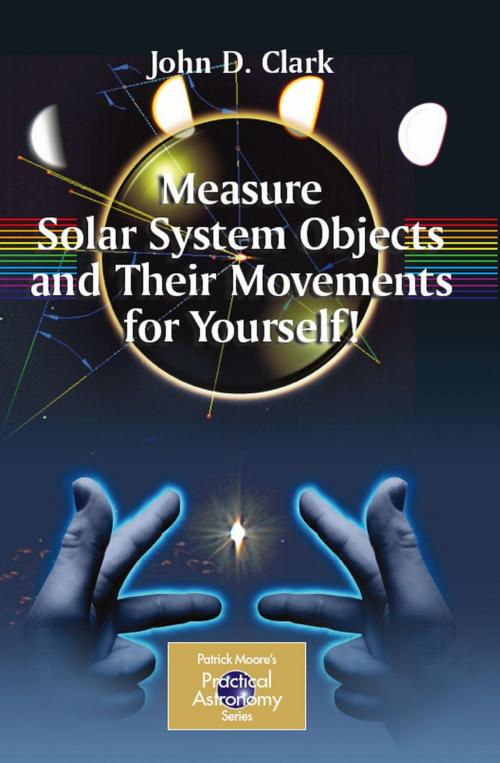Measure Solar System Objects and Their Movements for Yourself!
Nonfiction, Science & Nature, Science, Earth Sciences, Geology, Physics, Astronomy| Author: | John D. Clark | ISBN: | 9780387895611 |
| Publisher: | Springer New York | Publication: | April 20, 2009 |
| Imprint: | Springer | Language: | English |
| Author: | John D. Clark |
| ISBN: | 9780387895611 |
| Publisher: | Springer New York |
| Publication: | April 20, 2009 |
| Imprint: | Springer |
| Language: | English |
Instead of taking somebody's word for it about the basic size and distance statistics for the solar system, this book shows amateur astronomers how to measure these things for themselves. This is an enriching experience for any amateur astronomer - to understand and personally measure some fundamental astronomical quantities and distances.
A basic knowledge of geometry is required, but it is amazing how simple the geometry can be. Readers are led through the geometry as gently as possible - and in a light-hearted way - presuming that most non-academics will have half-forgotten most of their mathematics.
The practical astronomical equipment recommended is no more than a typical commercially-made amateur telescope and a camera of some sort - these days a webcam works very well. Apart from that all the reader will need is access to a computer, the know-how to download free software, and an enthusiasm to expand his knowledge of the basis of scientific astronomy.
Instead of taking somebody's word for it about the basic size and distance statistics for the solar system, this book shows amateur astronomers how to measure these things for themselves. This is an enriching experience for any amateur astronomer - to understand and personally measure some fundamental astronomical quantities and distances.
A basic knowledge of geometry is required, but it is amazing how simple the geometry can be. Readers are led through the geometry as gently as possible - and in a light-hearted way - presuming that most non-academics will have half-forgotten most of their mathematics.
The practical astronomical equipment recommended is no more than a typical commercially-made amateur telescope and a camera of some sort - these days a webcam works very well. Apart from that all the reader will need is access to a computer, the know-how to download free software, and an enthusiasm to expand his knowledge of the basis of scientific astronomy.















